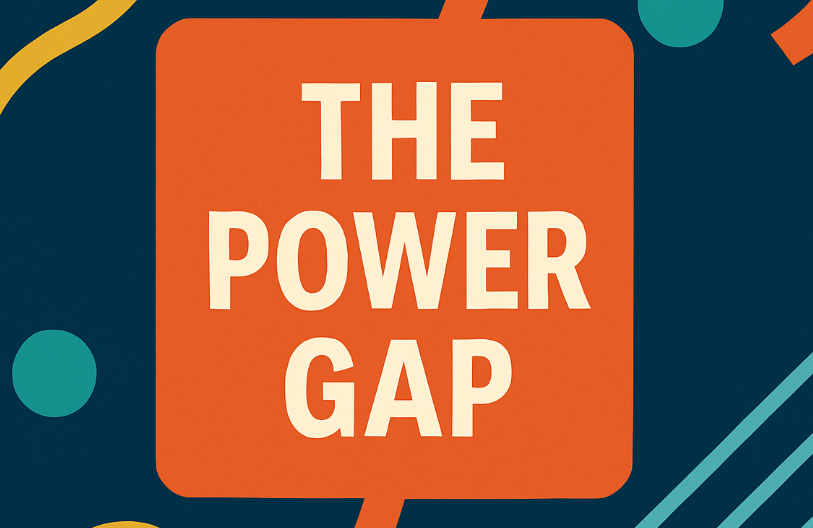Wednesday, October 29, 2025
Wednesday, October 29, 2025

Lisa MacMillan:
After writing recently about age and hiring bias, I’ve been thinking more deeply about who the workplace still excludes and why.
At the heart of it is something wider: the disconnect between people and power and the role communication plays in either bridging or widening that gap.
For those of us working in internal comms and employee experience, we often sit at the intersection of what leadership says and what employees actually feel. And we know: when trust breaks down, comms alone can’t fix it. But it can help rebuild it if it’s backed by real intent.
What People Actually Want
Across every industry, there’s a widening gap between what leaders think employees want — and what people actually value.
And it’s not just a question of perks, policies or job titles.
It’s a deeper disconnect about what work means, what it’s for, and how it fits into real life.
A recent World Economic Forum report sums it up clearly:
“Employers continue to focus on work-life balance, but workers want more meaningful work.”
This isn’t a new idea. But post-pandemic, in an era of AI, remote work and deep structural change, the disconnect feels sharper.
Because here’s the truth:
People don’t just want flexibility. They want to feel heard.
They don’t just want career progression. They want to work with purpose.
They don’t just want another pay rise. They want to feel valued, respected and trusted.
And here’s the problem:
In many organisations, leadership isn’t listening.
The Illusion of Listening
Over the past two years, we’ve seen a rise in employee surveys, engagement platforms, internal comms campaigns and well-being initiatives. All of which are well-intentioned.
But they’re often surface-level.
A pulse survey isn’t a conversation.
A workshop isn’t a strategy.
A comms cascade isn’t a culture.
When employees say they want to feel seen and heard, they’re not just asking for a voice note from the CEO. They’re asking for a seat at the table. A real say in how decisions are made.
And when that doesn’t happen? Trust erodes.
Because people know when they’re being managed, not engaged.
They know when feedback loops are performative.
They know when action plans are designed to tick boxes — not drive change.
This Matters More Than Ever
We’re living through an era of massive change:
The rise of AI and automation
Shifting generational expectations
Political, social and environmental volatility
At the same time, many people are tired. They’ve been through back-to-back restructures, rising workloads, and years of uncertainty. And they’re re-evaluating what matters.
They don’t just want jobs. They want meaning, momentum and stability.
And they’re not afraid to walk away when they don’t get it.
The companies that thrive in the next decade won’t just be the ones with the best tech, the sharpest employer brand or the biggest budgets.
They’ll be the ones who close the gap — and create cultures people want to be part of.
Cultures built on trust, transparency and a deep understanding of what really drives people.
AI Adoption: Bridge or Blind Spot?
Powerful technologies can easily outpace the leadership and communication structures supposed to support them.
According to BCG’s AI at Work 2025 report, only 51% of front-line workers currently use generative AI — but with strong leadership, the right tools, and proper training, adoption and optimism jump from 15% to 55%.
EY’s recent Future of Work analysis highlights the rise of “agentic AI” — systems designed to keep humans at the centre, especially in sensitive and highly regulated sectors. It’s not just about automation — it’s about enabling better human judgment.
And yet, a recurring challenge remains: 70% of successful AI adoption depends on change management, communication, and leadership alignment — not just the tech itself.
In other words: AI doesn’t replace the need for strong leadership. It demands it.
A Global Perspective
While this power gap feels particularly sharp in Western hiring and corporate systems, other regions are racing ahead in reshaping work — and the contrast is telling.
In Asia, for example, over 200 million people in China are part of the gig economy. India is trialling zero-commission platforms like Ola to support more sustainable earnings for informal workers. These aren’t just economic shifts — they’re re-framing how labour is structured and valued.
Meanwhile, AI is becoming deeply embedded in how work happens. In South Korea, influencer marketing spend is set to reach $490 million by 2025 — with AI avatars already outperforming humans in commercial live-streams. In Japan, virtual influencers are partnering with luxury brands. And across APAC, 60% of companies are expected to deploy regionally trained language models by 2025.
At the same time, 60% of employers globally say they’re concerned their workforce isn’t ready for these changes — highlighting a mismatch between innovation and preparedness.
Wherever you are in the world, the message is clear: The future of work isn’t just about tech or talent. It’s about how we lead.
The organisations that succeed won’t just optimise processes — they’ll value people.
+++
Lisa MacMillan is a global talent expert and thought leader, and is a #WeLeadComms honoree and a Strategic Columnist
Written by: Editor
© 2025 Stratpair Ltd., trading as Strategic. Registered in Ireland: 747736